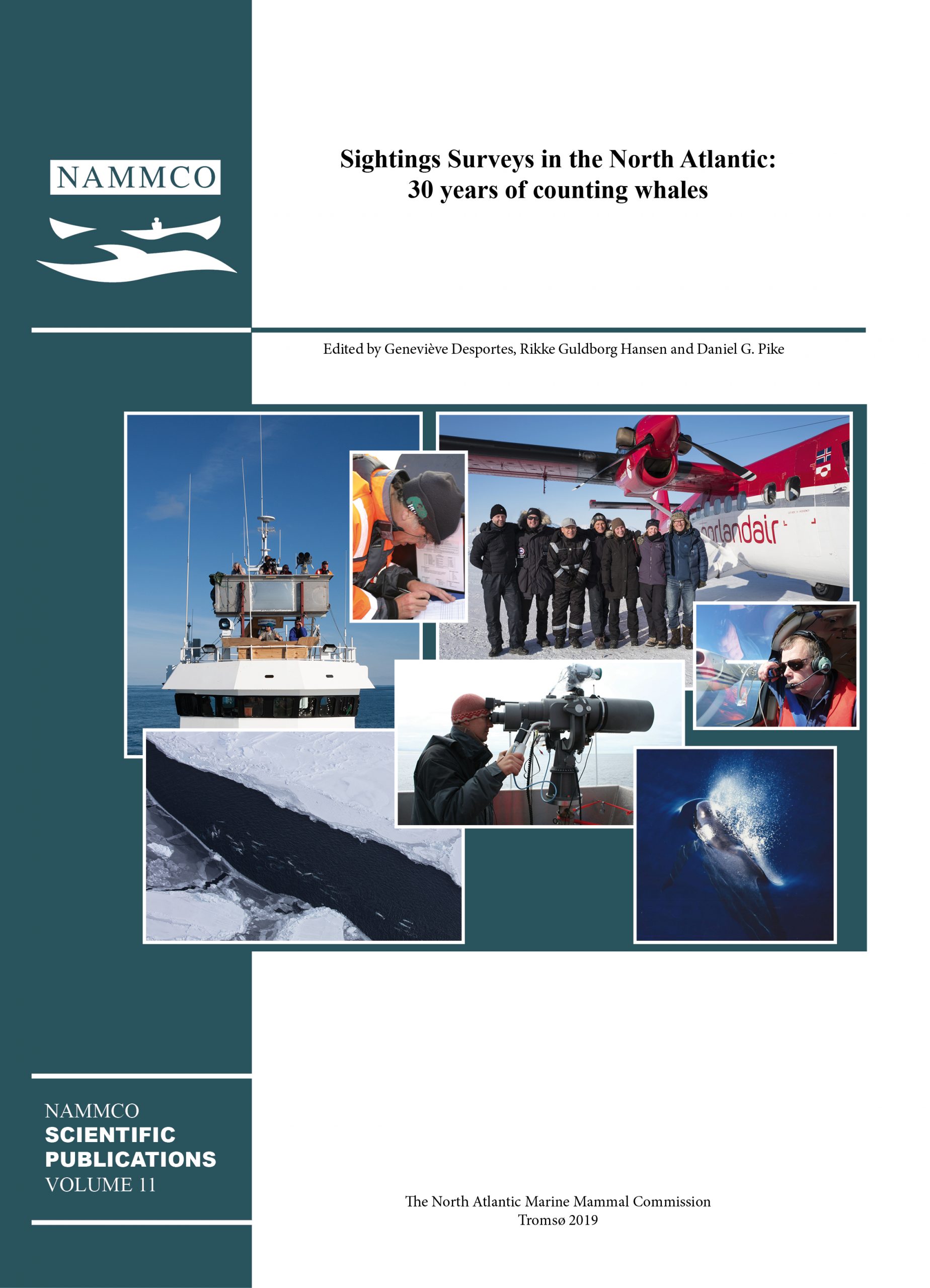29 May 2020: New Article on Distribution and Abundance of Cetaceans in Iceland

We are pleased to announce that the sixth article in Volume 11 of the NAMMCO Scientific Publications Series – Sightings Surveys in the North Atlantic: 30 years of counting whales has now been published.
The article, Distribution and Abundance of Cetaceans in Icelandic Waters overs 30 years of Aerial Surveys, was authored by Daniel G. Pike, Thorvaldur Gunnlaugsson, Jóhann Sigurjónsson and Gísli A. Víkingsson.
ABSTRACT
Beginning in 1986, 7 aerial surveys covering the coastal waters of Iceland have been conducted up to and including 2016. In addition, 7 partial surveys covering portions of the same area and at different times of the year have been flown in the same 30-year period. We present previously unpublished abundance estimates, corrected to the extent feasible for known biases, for common minke whales (Balaenoptera acutorostrata), humpback whales (Megaptera novaeangliae), white-beaked dolphins (Lagenorhynchus albirostris) and harbour porpoises (Phocoena phocoena) from some or all of the 2007, 2009 and 2016 surveys. We also examine the distribution of these and other species in Icelandic waters over the 30-year timespan of the surveys, as well as changes observed over the period. The relative abundance of common minke and humpback whales, and white-beaked dolphins, was comparatively low in the spring and fall, and peaked in June and July when all of the main surveys have been carried out. An analysis of changes in density as an index of relative abundance from all surveys (1986-2016) indicates that common minke whale abundance decreased by up to 75% after 2001 and has remained at a relatively low level since then. This decrease has been particularly apparent in the southwest and southeast of Iceland, areas that previously had very high densities. Relative abundance of humpback whales and white-beaked dolphins has increased over the period 1986-2016, particularly in the northern part of the survey area. Estimating harbour porpoise abundance and trend was considered unfeasible except from the surveys conducted in 2007 and 2016, which provide abundance estimates of similar magnitude. We place these observed changes in the context of oceanographic and ecosystem changes documented over the same period.
The full article is available here


